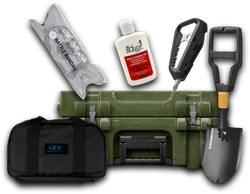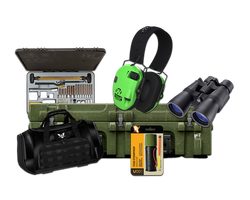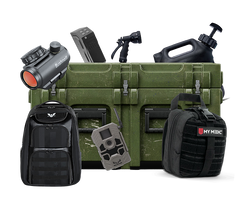Can You Bring a Duffel Bag on a Plane? A Comprehensive Guide
Table of Contents
- Introduction
- Understanding Airline Baggage Policies
- Checking Your Airline's Specific Baggage Policy
- Advantages of Using a Duffel Bag for Travel
- Packing Tips for Your Duffel Bag
- Navigating Security and TSA Regulations
- Conclusion
- FAQ
Introduction
Imagine this: you’re at the airport, ready for a much-anticipated trip, and your trusty duffel bag is packed with everything you need for your journey. But then, a nagging question creeps into your mind—“Can I actually bring a duffel bag on a plane?” If you’ve ever found yourself in this situation, you’re not alone. Many travelers face confusion regarding airline policies, especially when it comes to the types of bags they can bring onboard.
In recent years, air travel has become increasingly regulated, with airlines implementing strict guidelines on baggage size and weight. This scrutiny can often leave travelers uncertain about what they can and cannot bring. The duffel bag, known for its versatility and spaciousness, raises many questions. Is it considered a carry-on? Can it serve as a personal item? What are the size restrictions? The aim of this blog post is to clarify these concerns and help you navigate the complexities of flying with a duffel bag.
By the end of this post, you will have a comprehensive understanding of airline regulations regarding duffel bags, the advantages of using them, and tips to maximize your packing efficiency. We’ll also touch on practical examples, so you can feel confident as you prepare for your next flight with your reliable duffel in tow.
Understanding Airline Baggage Policies
The Basics of Carry-On and Personal Items
Before diving into the specifics of duffel bags, it’s important to understand the general rules associated with carry-on luggage and personal items. Airlines typically have two categories of baggage:
-
Carry-On Luggage: This is the larger bag that you place in the overhead compartment. Most airlines allow one carry-on bag per passenger, and it must fit within specified dimensions, usually around 22 x 14 x 9 inches (56 x 36 x 23 cm).
-
Personal Items: These are smaller bags, such as backpacks, purses, or briefcases, that must fit under the seat in front of you. The size limit for personal items varies by airline but generally falls between 16 to 18 inches in length.
Duffel Bags as Carry-On Luggage
So, can you bring a duffel bag on a plane as your carry-on? The answer is generally yes, provided it meets the airline's size restrictions for carry-on luggage. Duffel bags are often soft-sided, making them easier to fit into tight spaces, which can be an advantage during boarding. However, it’s crucial to check the specific dimensions allowed by your airline before your flight.
Duffel Bags as Personal Items
The next question is whether a duffel bag can be considered a personal item. While many airlines classify smaller duffel bags as personal items, it’s essential to ensure that the bag meets the required dimensions for under-seat storage. In most cases, a duffel bag that is too large will be classified as a carry-on and may lead to additional fees if it exceeds size limits.
Checking Your Airline's Specific Baggage Policy
Airline-Specific Guidelines
Every airline has its own baggage policies, including size and weight limits. Here are some general guidelines from popular airlines:
- American Airlines: Personal items must be no larger than 18 x 14 x 8 inches. Carry-on bags can be up to 22 x 14 x 9 inches.
- Delta Airlines: Similar to American Airlines, the personal item limit is 18 x 14 x 8 inches, while the carry-on limit is 22 x 14 x 9 inches.
- Southwest Airlines: Allows one carry-on bag not exceeding 24 x 16 x 10 inches and one personal item that fits under the seat.
It's beneficial to visit the airline's official website before your travel to confirm the latest guidelines and avoid unexpected surprises at the airport.
Advantages of Using a Duffel Bag for Travel
Versatility and Flexibility
Duffel bags are incredibly versatile and can be used for various travel needs. Whether you’re going on a weekend getaway, a gym session, or an outdoor adventure, a duffel bag can adapt to your requirements. They often feature multiple compartments, making organization simple.
Space Efficiency
One of the major benefits of a duffel bag is its space efficiency. Unlike traditional suitcases, which may have rigid structures, duffel bags can be packed into various shapes to maximize storage. This flexibility allows you to fit more items into the same space, making them ideal for travelers who like to pack efficiently.
Lightweight and Portable
Most duffel bags are lightweight, which can help you stay within the weight limits set by airlines. This is particularly important since many airlines charge additional fees for overweight luggage. A lightweight duffel bag allows you to pack more essentials without exceeding weight thresholds.
Packing Tips for Your Duffel Bag
Prioritize Essentials
When packing your duffel bag, prioritize the essentials. Consider the duration of your trip and pack accordingly. For example, if you're going on a short weekend trip, focus on the basics like clothing, toiletries, and any necessary gear.
Use Packing Cubes
To maximize space and organization, consider using packing cubes within your duffel bag. These can help separate your belongings, making it easier to find what you need without digging through everything.
Roll Your Clothes
Rolling clothes instead of folding them can save space and help prevent wrinkles. This method allows you to pack more efficiently and create more room for additional items.
Navigating Security and TSA Regulations
What You Can Bring
When traveling with a duffel bag, it's essential to be mindful of TSA regulations regarding what can be carried onboard. Common items prohibited in carry-on luggage include:
- Sharp objects (knives, scissors)
- Liquids over 3.4 ounces (100 ml)
- Flammable items
- Certain sporting goods
Security Screening
At security checkpoints, you will need to remove your duffel bag from the conveyor belt for screening. Ensure that any electronic devices, such as laptops or tablets, are easily accessible, as they may need to be removed for inspection.
Conclusion
In summary, bringing a duffel bag on a plane is generally acceptable, provided it adheres to your airline's specific guidelines regarding size and weight. As a versatile and practical option for travel, duffel bags offer many advantages, from their lightweight design to their flexible packing capabilities.
Before your next flight, make sure to check your airline's policies and pack efficiently to ensure a smooth travel experience. Whether you’re embarking on a short trip or a long journey, a well-packed duffel bag can be a reliable companion, allowing you to travel with ease and confidence.
FAQ
Can I bring both a duffel bag and a backpack on a plane?
Most airlines allow one carry-on bag and one personal item. If your duffel bag is classified as your carry-on, you may still bring a backpack as your personal item as long as it fits under the seat.
What happens if my duffel bag is too large?
If your duffel bag exceeds the airline’s size restrictions, it may need to be checked, which could incur additional fees. Always measure your bag before heading to the airport.
Are there restrictions on what I can pack in my duffel bag?
Similar to other types of luggage, there are restrictions on certain items you can pack in your duffel bag. Be sure to review TSA regulations regarding prohibited items.
Is a duffel bag suitable for international travel?
Yes, a duffel bag can be an excellent choice for international travel, especially if it meets the carry-on size requirements. Its lightweight and flexible design make it easy to navigate through airports.
What should I do if I have connecting flights?
When traveling with connecting flights, ensure your duffel bag meets the size requirements for each airline you will be flying with. Some airlines may have different policies, so it’s best to double-check.
With this information, you can confidently pack
Share this article



